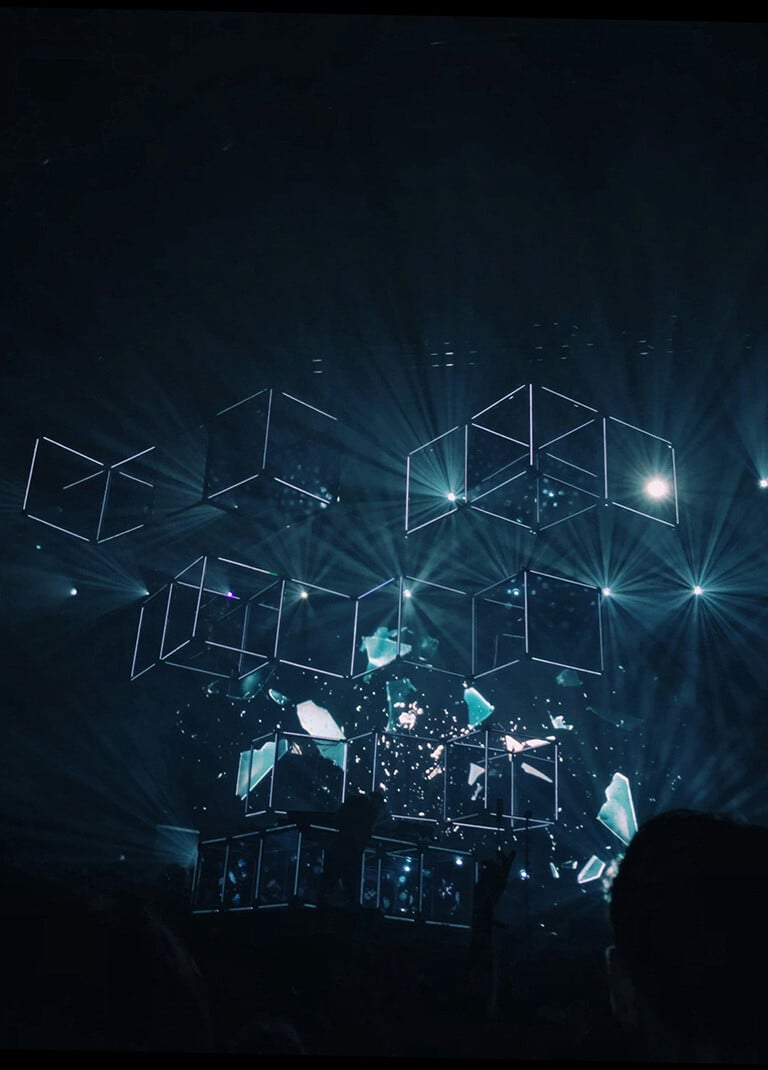Artificial intelligence, sustainability, cloud recalibration, and power constraints are just some of the topics expected to dominate data center connectivity conversations in 2024 and beyond.
“Artificial intelligence is hot. So hot that the AI boom is creating a resource-constrained world, driving stupendous demand for GPUs, data centers, and AI expertise. All three are likely to be in short supply, but none so much as wholesale data center space,” reports Data Center Frontier in their “The Eight Themes That Will Shape the Data Center Industry in 2024.”
Data Center Knowledge notes that 2024 was a record year for data center usage, in large part due to growing artificial intelligence (AI) usage and growth in the multi-tenancy data center market, which globally is forecasted to reach $51.7 billion by 2028.
Gartner, meanwhile, predicts that by next year, 40 percent of procured premises-based compute and storage will be consumed as a service, up from less than 10 percent in 2021, and that 70 percent of organizations will implement structured infrastructure automation to deliver flexibility and efficiency, up from 20 percent in 2021.
Data Center Infrastructure Sustainability on the Rise
Gartner also predicts that by 2027 some 74 percent of organizations will have implemented a data center infrastructure sustainability program, up from less than 5 percent in 2022.
“Responsibilities for sustainability are increasingly being passed down from CIOs to infrastructure and operations (I&O) leaders to improve IT’s environmental performance, particularly around data centers,” said Autumn Stanish, Senior Principal Analyst at Gartner. “This has led many down the path of greater spend and investment in environmental solutions, but environmental impact shouldn’t be the only focus. Sustainability can also have a significant positive impact on non-environmental factors, such as brand, innovation, resilience and attracting talent.”
According to the Gartner survey, the top three indirect benefits of implementing a sustainability program include:
- Reduced Costs: The most effective action I&O leaders can take for the environment and their budget is to defer purchasing new equipment and better manage, optimize, or redeploy what they already have. According to Gartner, organizations can experience up to 60 percent in cost savings by simply extending product life spans from three to five years. In addition, optimizing for better server utilization and storage capacity is another way to reduce waste and save money.
- Innovation: Organizations are using sustainable strategies to drive innovation and growth through new products and business models. Technology hardware vendors are rapidly releasing new products and services based on AI technology, analytics insights, and circular business models that can be leveraged for innovation. For example, open telemetry platforms may be deployed to track and improve energy efficiency, while simultaneously offering critical insights for IT staff to understand usage patterns that can be optimized for greater, more consistent performance of systems.
- Better Risk Management and Mitigation: In a market disrupted by price fluctuations and supply constraints, organizations can achieve greater resilience and better risk management and mitigation by adopting sustainable recycling and resource utilization practices. This includes organizations using renewable energy, generating their own power, and reusing and redeploying equipment as much as possible.
AI Dominates Data Center Connectivity in 2024
It’s been just over a year since ChatGPT launched AI into the stratosphere, moving the topic for many from theoretical to practical. AI is trending in 2024 for data centers in many ways, including:
- AI Space Crunch: Space crunch is not an exercise for astronauts to stay in shape in orbit but describes how AI’s data-hungry demand has gobbled up all the available wholesale data center space in many major markets.
“Much of the anticipated 2024 supply will be pre-leased, resulting in limited options for users who are not in the market far in advance of their preferred go-live date,” JLL reported.
According to datacenterHawk, the average vacancy rate across North American data center markets stood at 2.7 percent in the third quarter of 2023, with a key market such as Northern Virginia at just 1 percent. - Data Center Workforce Upskilling: Holland Barry, SVP and Field CTO, Cyxtera, tells Data Center Knowledge that “As organizations gain more clarity about how AI is relevant to their business, we can expect they will invest in more AI-related training for their employees.”
- Moving to the Edge: Utpal Mangla, General Manager at Industry EDGE Cloud, IBM, tells Data Center Knowledge that “to meet the data processing and compute needs for AI, we can expect to see more enterprises shifting their data center strategy toward edge computing in 2024.”
- Pricing for AI Capacity Climbs Higher: Data Center Frontier notes that supply constraints almost always show up in pricing so that as AI demand continues to grow, rates will continue to climb as new enterprises to the market are willing to pay higher prices per KW per month to secure power and a chance to reach their markets.
- Modular Design May be Shortest Path to AI Deployment: Modular design has been a trending topic including pre-packaged power rooms and cooling equipment.
“Many of the current modular IT products target the market for edge computing. But for enterprises with real estate and power capacity, placing a module in a parking lot or warehouse may be the shortest path to an AI deployment. These factory-built form factors offer availability and speed-to-market,” says Data Center Frontier. - Future Data Center Construction Focuses on AI: Gilad Shainer, Vice President of Networking, NVIDIA, tells Data Center Knowledge that “the future of enterprise data center connectivity requires separate management (aka north-south) and AI (aka east-west) networks, where the AI network includes in-network computing specifically designed for high-performance computing, AI and hyperscale cloud infrastructures.”
- AI Demand for Power and Cooling Drives Design Updates: AI apparently has no limit to its thirst for power and cooling which is forcing data center operators to focus on design updates. Data Center Frontier envisions the emergence of entire facilities optimized for the extreme density of AI workloads, including significant installations of liquid cooling infrastructure.
- Cyber Defense Calls on AI and Prepares for It: We know that bad actors can take advantage of AI to penetrate the defenses of data centers, but the technology can also play a critical role in stopping malicious attacks. Both sides will up their reliance on AI in 2024.
“It will power defensive tools as well as potent instruments for cybercrime. Maliciously trained large language models, capable of eerily accurate human impersonations, will significantly heighten the risk of social engineering,” explained Data Center Knowledge.
Cloud Recalibration and Shift to Public Cloud Alternatives
Cloud recalibration and a shift to cloud alternatives are on the menu in 2024 as the pendulum swings a bit from the all-in move to cloud computing.
“Cloud costs are growing in line with inflation, climate-related data center outages are continuing to increase alongside increasingly severe heat waves and storms and cyberattacks are now often targeting the cloud,” Rafael Umann, CEO, Azion, told Data Center Knowledge. “In response to these liabilities, some companies are making a return to on-premises applications, while many others will embrace edge computing because of increased resilience due to distributed infrastructure, plus the ability to protect apps directly on the edge with web application firewalls.”
Holland, in the same article, agrees, pointing out that the “all in” public cloud stampede has resulted in some financial pain for organizations.
“Now they’re realizing that they must get their arms around it and possibly make some changes, including migrating certain workloads to a private cloud or back to on-premises,” Holland said.
Others cautioned, however, that the party is not completely over for the public cloud, as it will continue to grow in 2024 but at a more selective ace as organizations gameplan with such solutions as hybrid options and cloud-like offerings such as Bare Metal-as-a-Service (BmaaS), which can lead to flexibility, scalability, and cost predictability.
We Got the Power! Data Center Demand on the Grid
Global digitalization, which has accelerated since the start of the pandemic, has led to an increasing demand for the power grid by the data center industry.
“Making the Internet available everywhere, all the time requires an enormous amount of infrastructure and power. Data centers have become the front lines in our society’s digital transition, creating tension with the limitations of the power grid,” says Data Center Frontier. “Utilities are struggling to upgrade transmission networks to support the surging requirement for electricity to power data centers. CBRE says data center construction completion timelines have been extended by 24 to 72 months due to power supply delays.”
Look for these trends in power and cooling in the coming months:
- Data center operators using geothermal power systems that tap the earth’s heat via fiber-optic sensors.
- Multi-facility campuses will be fueled by natural gas generation.
- Modular data centers will take advantage of hydrogen fuel cell technology.
- Food waste will be turned into renewable natural gas and used to power microgrids.
- Liquid cooling manifolds and rack-level power distribution units will necessitate wider, deeper, and taller racks.
- Raised floors will be needed to support heavier racks and different types of power and cooling equipment.
- A shift to 240/415 V electrical distribution in data centers from 120/208 V.
“Generating clean energy on-site is becoming a priority to reduce power loss during transmission. In the future, hydrogen might become another option, but it requires government support to be sustainable,” Mark Neufurth, Lead Strategist, IONOS, told Data Center Knowledge.
Liquid cooling, say some analysts, will shift from being a “nice to have” alternative to a “must have” option.
“And it will become an increasingly important component to any data center design. Doing this right requires a complete data center redesign - so while we’ll continue to see “temporary fixes” over the next year, I predict the hyperscalers will be prioritizing and making the necessary moves to strategically implement liquid cooling into their data center builds,” Dirk Naylor, Senior Vice President and General Manager, USA & Global Accounts at WESCO, told Data Center Knowledge.









